In recent years, the global art scene has witnessed a remarkable surge of creativity emerging from the African continent. This new wave of African artists is not only redefining the boundaries of contemporary art but also offering fresh perspectives that challenge traditional narratives. With a rich tapestry of cultural heritage and a keen eye for innovation, these artists are merging ancestral traditions with cutting-edge techniques to produce work that resonates on a global scale.
From thought-provoking installations to striking visual art, the contributions of these rising stars are transforming the art world and capturing the attention of collectors, critics, and audiences alike. As the spotlight increasingly turns towards Africa, here are some of the most exciting and promising emerging artists to watch in the coming years.
1 .Cinga Samson
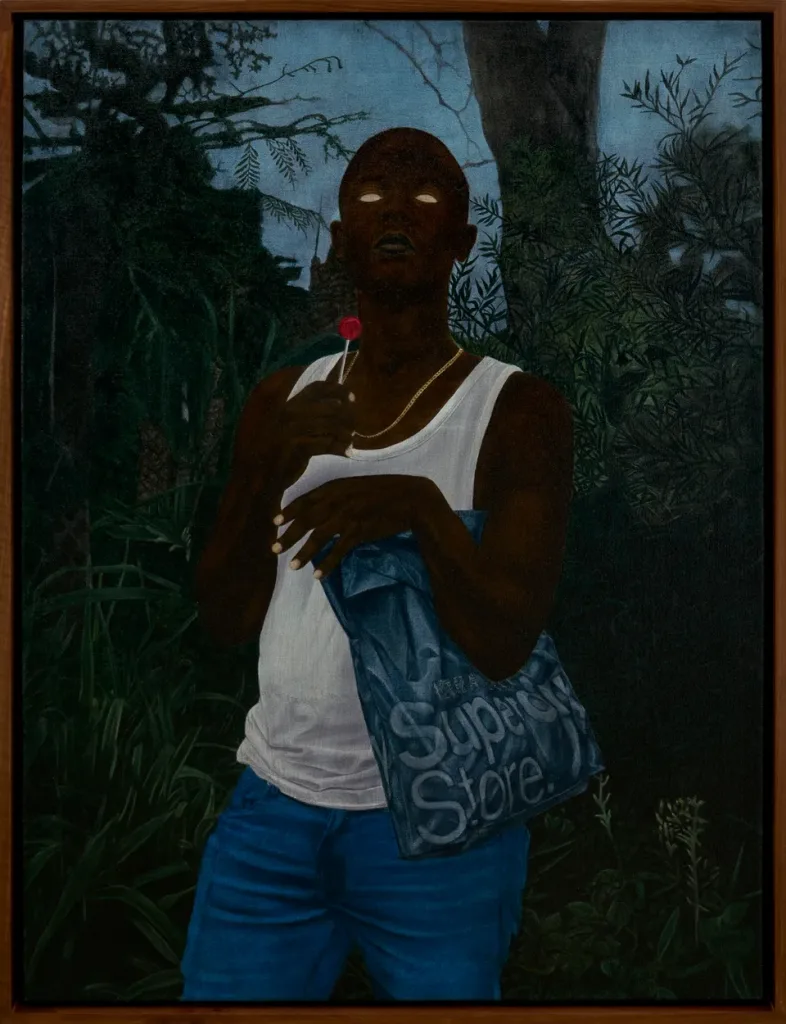
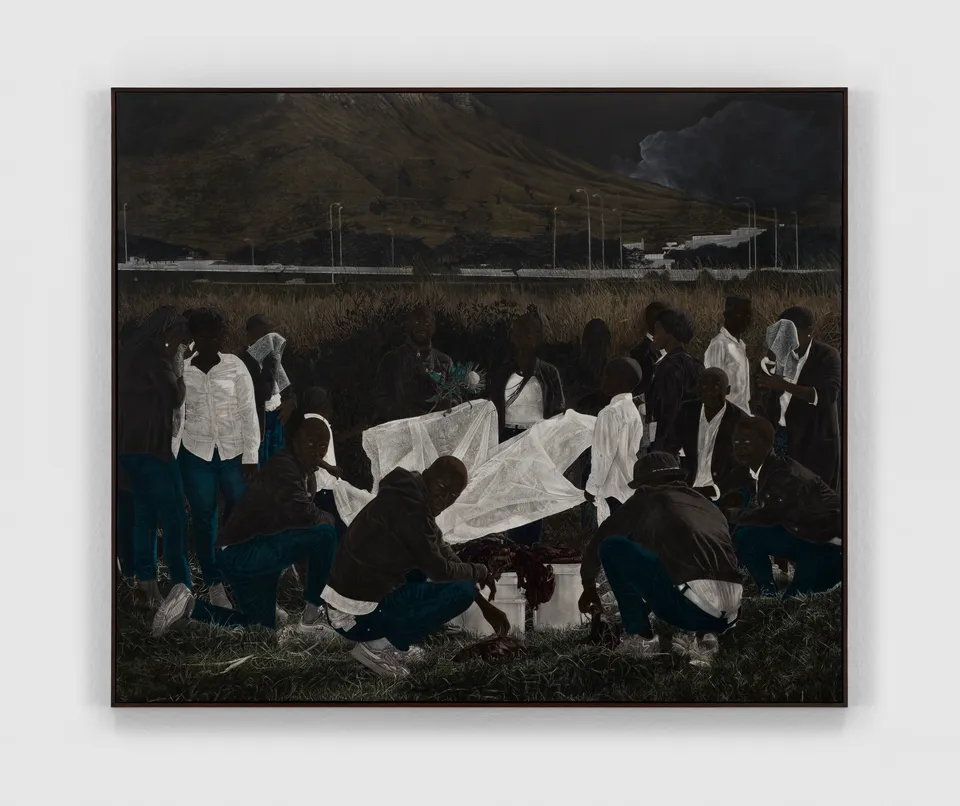
Born in Cape Town, South Africa, Cinga Samson is making waves for his representational oil paintings of self portraits and large scale group scenes. Samson’s work is characterized by its striking visual narratives and profound exploration of identity, memory, and heritage.
Samson’s journey into the art world began at an early age, influenced by the vibrant street art and murals of his hometown. In 2006, Samson, a self-taught artist, began to paint after he joined Isibane Creative Arts in Khayelitsha, on the outskirts of Cape Town where his innovative approach to combining traditional techniques with modern materials began to take shape. One of the most compelling aspects of Samson’s art is his use of mixed media. His pieces frequently include collage, painting, and digital manipulation. Samson’s process is intimate and sensual. Each figure is dark skinned with white eyes without pupils and shaven heads.
In recent years, Samson’s work has gained significant attention from galleries and collectors around the world. Samson received the Tollman award for Visual Arts in 2017. He has exhibited in group and solo shows locally and globally including Cape Town, Berlin, Cologne, New York, Minneapolis and Oaxaca, Mexico. He is now represented by White Cube.
2. Kwesi Botchway
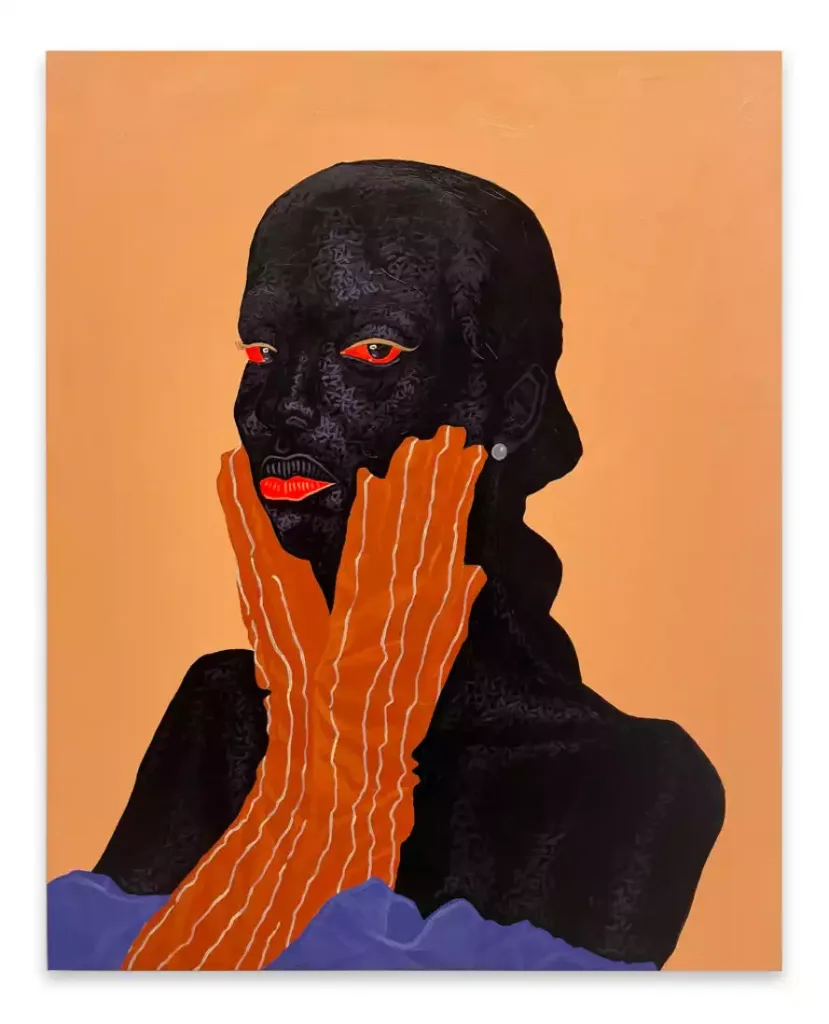

Kwesi Botchway, an emerging artist from Ghana, is capturing the art world’s attention with his evocative work. His formal training at the Kwame Nkrumah University of Science and Technology provided him with a solid foundation in fine arts, but it is his innovative approach to combining traditional Ghanaian art forms with modern aesthetics that sets him apart.
A notable feature of Botchway’s art is his use of portraiture. The point of focus in his work are the eyes, nose and mouth which he says “is where our emotions are best portrayed”. His portraits, often characterized by their vibrant hues and intricate patterns, offer a combination of 19th century French Impressionism and Contemporary African social realism. reinterpretation of Each piece tells a story, capturing the essence of its subject while also commenting on broader social and cultural issues.
Kwesi Botchway launched World Faze Art Studio in August 2023, an art studio and residency space in Accra, Ghana. He has had solo and group exhibitions in Los Angeles, Belgium, New York, London, Accra, and Australia amongst others.
3. Eddy Kamuanga Ilunga


Originating from the Democratic Republic of Congo, Ilunga’s work is distinguished by its intricate fusion of traditional African elements and contemporary artistic practices. Eddy Kamuanga received formal training from the Académie des Beaux-Arts de Kinshasa, which laid the groundwork for his unique artistic voice.
One of the hallmarks of his art is the exploration of themes related to identity and societal transformation. His pieces often feature fragmented figures and abstracted forms that evoke a sense of both personal introspection and social commentary. Through this approach, Ilunga addresses issues such as the impact of colonialism, urbanization, and cultural preservation.
The international art community has taken notice of Ilunga’s work, with his pieces being featured in prominent exhibitions and galleries around the world. His participation in major art fairs and biennales has established him as a significant voice in contemporary African art, and his work continues to inspire conversations about the intersections of tradition and modernity.
4. Sungi Mlengeya
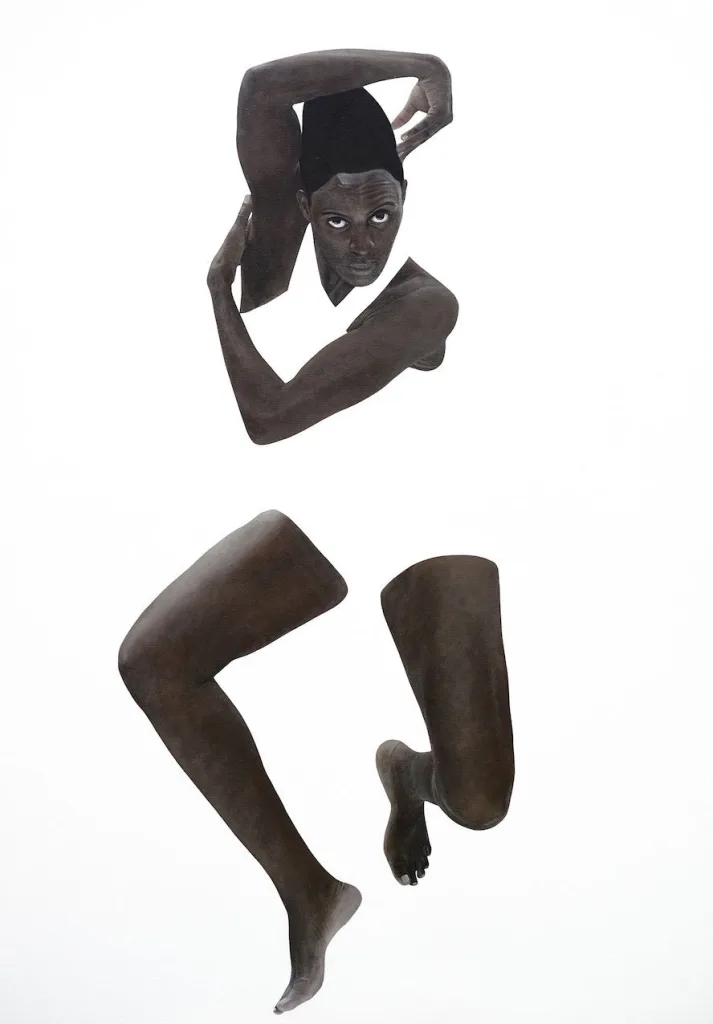

Born in Dar es Salaam, Tanzania, Sungi Mlengeya is a self taught artist known for her striking depictions of Black women. Through her signature style, which combines simplicity with profound depth, she explores themes of empowerment, self-discovery, and freedom.
Born and raised in Tanzania, Mlengeya left her career in banking to fully commit to her artistic journey. Her decision to pursue art was fueled by a deep desire to express stories often untold and voices often unheard. Over time, her minimalist compositions, featuring striking figures against large, white negative spaces, have become her signature. One of the most compelling aspects of Mlengeya’s work is her focus on Black female identity. Her paintings present Black women not as objects of the gaze but as autonomous figures in control of their own narratives. Each figure exudes a quiet power and dignity, challenging stereotypes and offering a fresh perspective on the experiences of African women.
In 2020, she was honoured in Apollo 40 Under 40 Africa, a selection of the most inspirational young people in the African art world; and in 2022 graced the Johnnie Walker and Trace Africa Top 30 list of leading creatives in the continent. With several solo and group exhibitions under her belt, her dedication to telling stories of empowerment make her a transformative figure in contemporary African art.
5. Troy Makaza
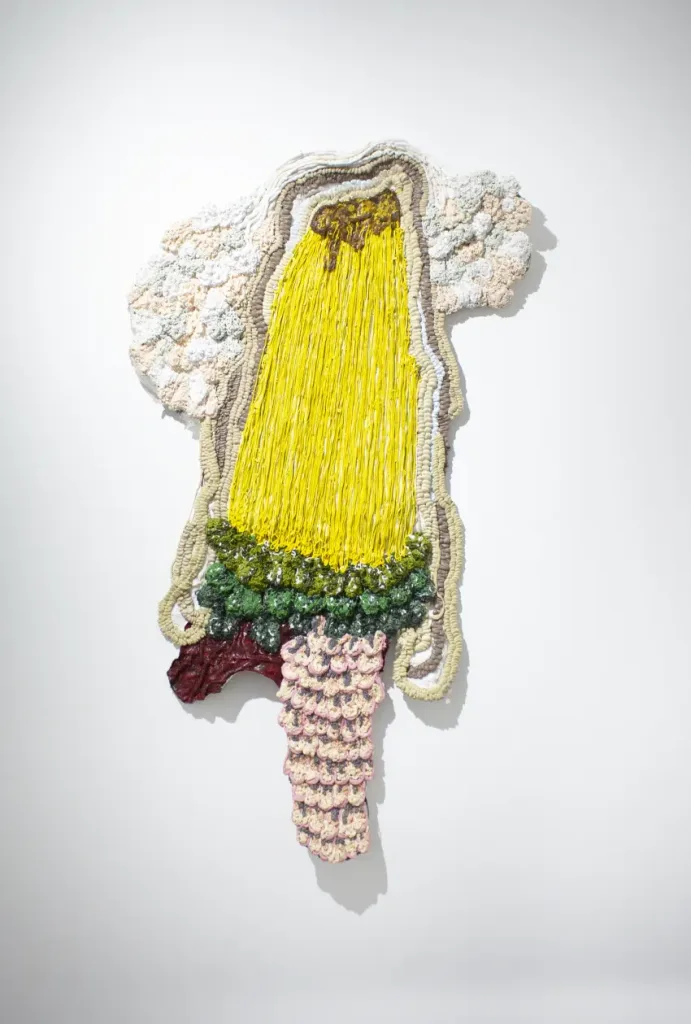
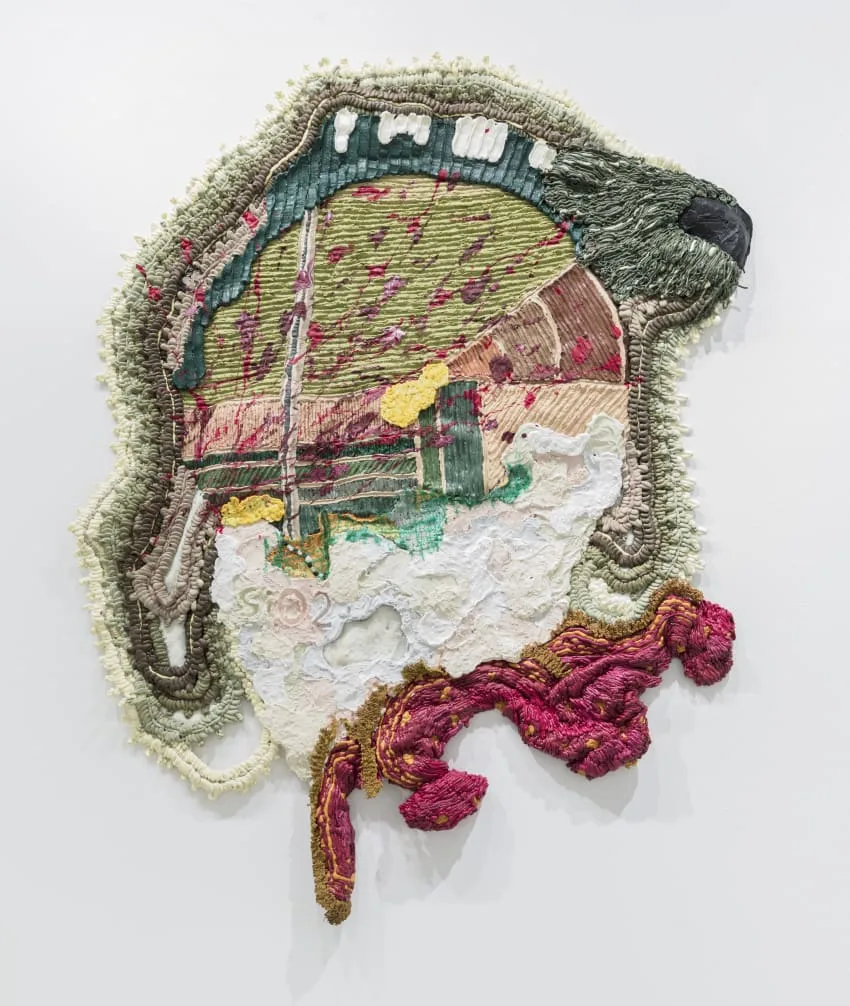
Blurring the boundaries between painting and sculpture, Troy Makaza creates visually stunning works using silicone-infused paint to craft intricate, woven compositions that explore themes of identity, culture, and social transformation. His distinctive style, characterized by vibrant colors and dynamic textures, sets him apart as a leading voice in the new wave of African art.
Born in Harare, Zimbabwe, Makaza studied at the National Gallery School of Visual Art and Design where he studied painting and sculpture. He was mentored by artists like Wycliffe Mundopa, Moffat Takadiwa and Gresham Tapiwa Nyaude. He quickly gained attention for his unique technique of blending silicone with paint, which allowed him to create flexible, fluid forms that defy traditional artistic categories. His work often appears like a hybrid between painting and sculpture, with strands of colored silicone twisting and intertwining to form dense, textured surfaces.
Makaza’s art has gained attention in prestigious exhibitions both in Africa and internationally. His bold, experimental approach has resonated with critics and collectors alike, making him one of the most exciting young artists to emerge from Zimbabwe’s thriving art scene.


